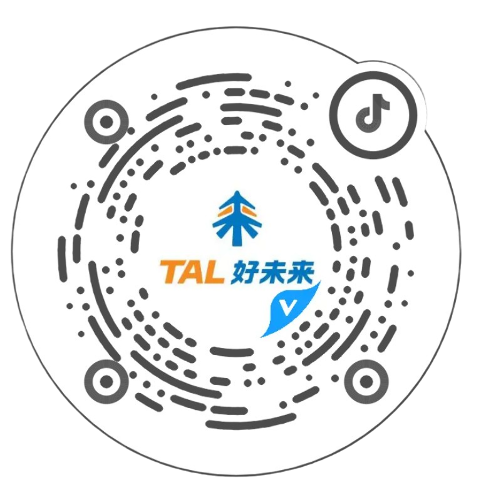




According to this reporter Yuan Chuanxi, at the recently held Consumer Electronics Show (CES 2025), AI remained the absolute star. Under the theme "AI Dive In," numerous manufacturers presented dazzling AI application products, ranging from AI glasses to AI refrigerators, AI air conditioners, and even AI pet robot dogs, showcasing various attempts at deeply integrating AI into people's daily lives.

2025 CES on-site photo provided by the company
Among these, "AI+Education" has become one of the hottest tracks. AI learning devices and AI dictionary pens from Chinese enterprises gained significant attention from attendees. After its debut at CES 2024, Xueersi International Education Group (hereinafter referred to as "Xueersi") returned with a learning machine equipped with a new intelligent assistant and the MathGPT, attracting the attention of attendees from around the world.
"AI brings opportunities to redefine smart education, and large-scale models make personalized learning at scale truly feasible." Tian Mi, CTO of Xueersi, explained that currently, MathGPT offers multiple application methods. In addition to being featured in the Xueersi Xpad at CES, it also includes an independent application "MathGPT Anytime Ask".
With the rapid development of artificial intelligence represented by large models, education is becoming one of the fastest fields for AI vertical applications to land.
This is partly due to the attention of governments around the world. The UNESCO global survey report on K-12 AI curriculum released in 2022 shows that 11 countries, including China, have developed and implemented K-12 AI courses.
In China, in May 2023, the Ministry of Education issued a plan emphasizing the active integration of new technologies such as artificial intelligence with the construction of the teaching workforce. Subsequently, various regions took proactive actions, continuously increasing the deployment of "AI+Education." For example, Beijing selected the first batch of 25 primary and secondary schools to carry out pilot applications of artificial intelligence in education and required the establishment of 100 benchmark schools for AI application scenarios by 2025. The Shanghai Municipal Commission of Economy and Informatization also revealed that since August last year, 45 education scenarios were collected from the "5+6" vertical domain application scenarios, from which four application demonstration bases combining "model training + scenario practice" were selected as the first batch of "Modeling Shanghai" industry application demonstration bases.
On the other hand, from digital human teaching assistants to question-answering large models, from classroom big data analysis systems to smart learning platforms, more and more ed-tech enterprises are actively leveraging large model technology to develop AI education products, applied in different educational scenarios such as classroom teaching, assignment evaluation, learning analysis, and tutorial explanations.

CES attendees experience the Xueersi learning machine Photo provided by the company
Xueersi, as the entity building the National New Generation Artificial Intelligence Open Innovation Platform for Smart Education, has launched the country's first 100-billion-level mathematical large model—Xueersi MathGPT, targeting the field of mathematics. This is also one of the first registered educational large models in China. MathGPT emerged at the top in evaluations focused on mathematical ability among 30 large models domestically and internationally.
Currently, MathGPT's core capabilities include automatic problem solving, essay grading for Chinese and English, personalized step-by-step problem explanations, etc. The large model's powerful generation and understanding capabilities not only help address students' individualized problems, mapping out relevant knowledge points from difficult questions and supplementing explanations for comprehensive understanding, but also popularize high-quality educational resources among a broader range of students.
With the release of AI educational large models and related products represented by Xueersi MathGPT, the topic of how "AI+Education" will reshape the education industry has become a heated discussion.
Presently, China still faces the "impossible triangle" challenge in traditional education, which seeks to balance scalability, fairness, and personalization. An earlier report by iMedia Research pointed out that while significant achievements have been made in scalability and fairness in China's education system, there is still room for improvement in achieving personalized education. AI technology, as a digital tool that simulates human intelligence, aids decision-making, and partially substitutes and extends human capabilities, brings opportunities to address this challenge. AI technology, deeply integrated into teaching and learning, empowers teaching entities, teaching carriers, and learning entities to enhance basic educational quality under inclusive education and achieve personalized education, gradually breaking through the "impossible triangle" in traditional education.
If AI provides a chance to break through the "impossible triangle" in the education industry, the emergence of large model technology brings a new dawn to this breakthrough.
Previously, in a public speech, Tian Mi stated, "All educational AI technology deserves to be redone with a large model." First, the model is more versatile. In simple terms, it means handling all tasks with one large model, significantly reducing training costs and improving training efficiency. Second, using the general large model as a foundation allows the model to acquire more world knowledge along with educational knowledge, making it smarter. Third, the generative large model with multi-round interaction capabilities makes human-machine interaction or teacher-student interaction easier and more convenient.
"I believe AI in education will be like autonomous driving, a process replacing and improving efficiency step by step. In the next decade, many educational scenarios outside and inside the home will be completed by AI." Tian Mi predicted in a recent media interview regarding when AI-empowered education will see disruptive change.
Accumulation of educational data can enable educational large models to develop rapidly and be effectively implemented in practice. The continuous accumulation of quality content and collaboration accelerates the pace at which AI comprehensively integrates with education.
In October 2024, Xueersi reached a strategic cooperation with the well-known supplementary education brand "5.3", integrating high-quality supplemental content into Xueersi Xpad's practice system. Relying on Xueersi MathGPT, Xueersi Xpad fully launched AI capabilities such as intelligent grading, error recording, and personalized recommendations to help students better verify their practicing outcomes and conduct targeted learning. Detailed data on students' answering times, accuracy rates, and error distributions provide precise portraits of their learning situations.
For Xueersi, a vast blue ocean market has emerged. Educational intelligent hardware is an important scenario for the implementation of "AI+Education." According to the "2024 China Educational Intelligent Hardware Industry Development Research Report" released by the Multi-Whale Education Research Institute, China's educational intelligent hardware market scale successfully surpassed 100 billion yuan in 2024, with a compound annual growth rate expected to reach 17.2% from 2020 to 2027.
Tianfeng Securities indicated that the development of AI learning device business is one of the main growth drivers for Xueersi's revenue. Xueersi will utilize these AI-driven intelligent learning devices to provide users with more opportunities to access high-quality learning content. Kaiyuan Securities also believes that Xueersi's software and hardware upgrades iteratively enrich its product matrix, focusing on application layers to seize the wave of AI-empowered education reform. AI is rapidly evolving from general large models to vertical models and application layers. The application of AI large models is expected to significantly boost user willingness to pay and user stickiness.
Reprinted from: Securities Daily Online https://www.zqrb.cn/gscy/qiyexinxi/2025-01-14/A1736845631815.html